All This Pioneering Jet Did Was Defend Our Airspace Effectively for Nearly 20 Years
Northrop’s F-89 Scorpion all-weather interceptor was the first of its kind. Developed as a replacement for the company’s P-61 Black Widow, the Scorpion was one of the first American jets to be armed with guided missiles, and the first combat aircraft to be armed with an air-to-air nuclear weapon- the unguided but still deadly Douglas AIR-2 Genie rocket. Northrop built 1,050 Scorpions, but they weren’t all created equal.
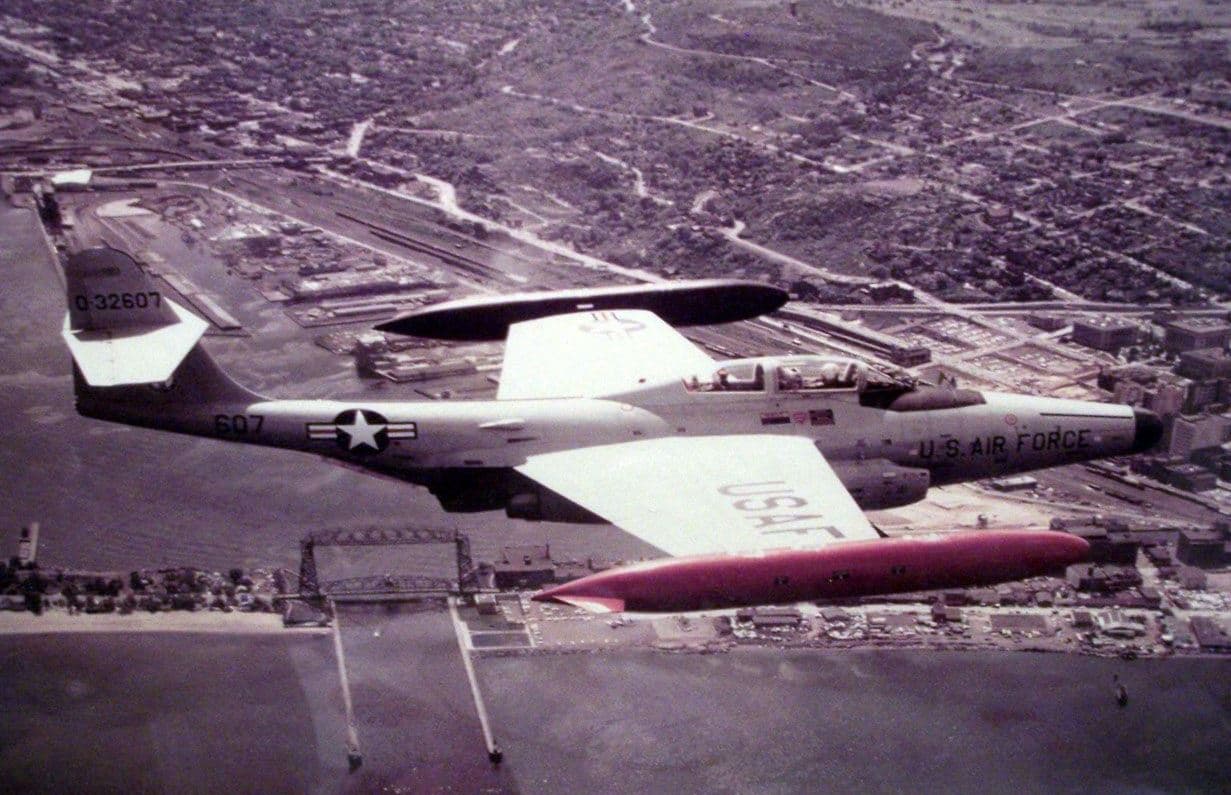
Lots of Competition
The US Army Air Forces (USAAF) first issued a specification for a new all-weather interceptor in late August 1945. The specification was revised a few months later with a top speed requirement of 520 miles per hour- the kind of speed only possible using jet propulsion. The specification also called for radar-controlled guns mounted on turrets.
The competition to build the new interceptor was between Northrop and Bell Aircraft, Consolidated-Vultee, Douglas Aircraft, Goodyear, and Curtiss-Wright, all of whom submitted at least one design proposal. By March 1946, two designs were left in the running- the Curtiss-Wright XP-87, one of four designs submitted by Northrop, the N-24.
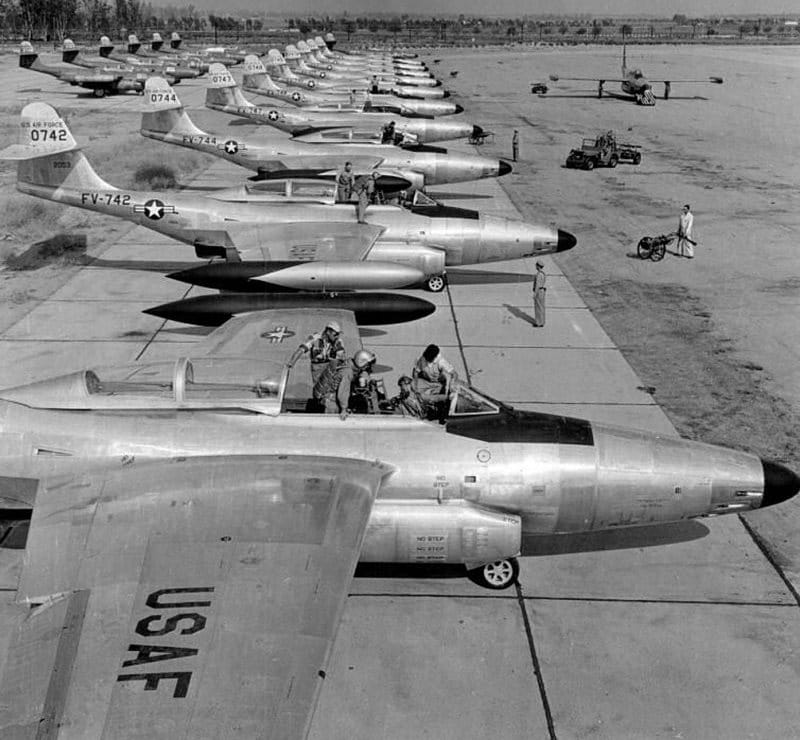
Designed-In Simplicity
The N-24 was powered by a pair of Allison J35 axial-flow turbojets mounted under its swept wings in a straight-through arrangement- intakes and exhausts directly into and out of the engines. Eventually, wind tunnel testing dictated a change to a thin straight wing with split ailerons capable of acting as conventional control surfaces, flaps, and speed brakes as needed.
The empennage went through some design changes, but ended up mounted high to avoid any effects from the engine exhaust. The design evolved to seat both pilot and radar operator in tandem under a single canopy, and the removal of the turret-mounted guns.
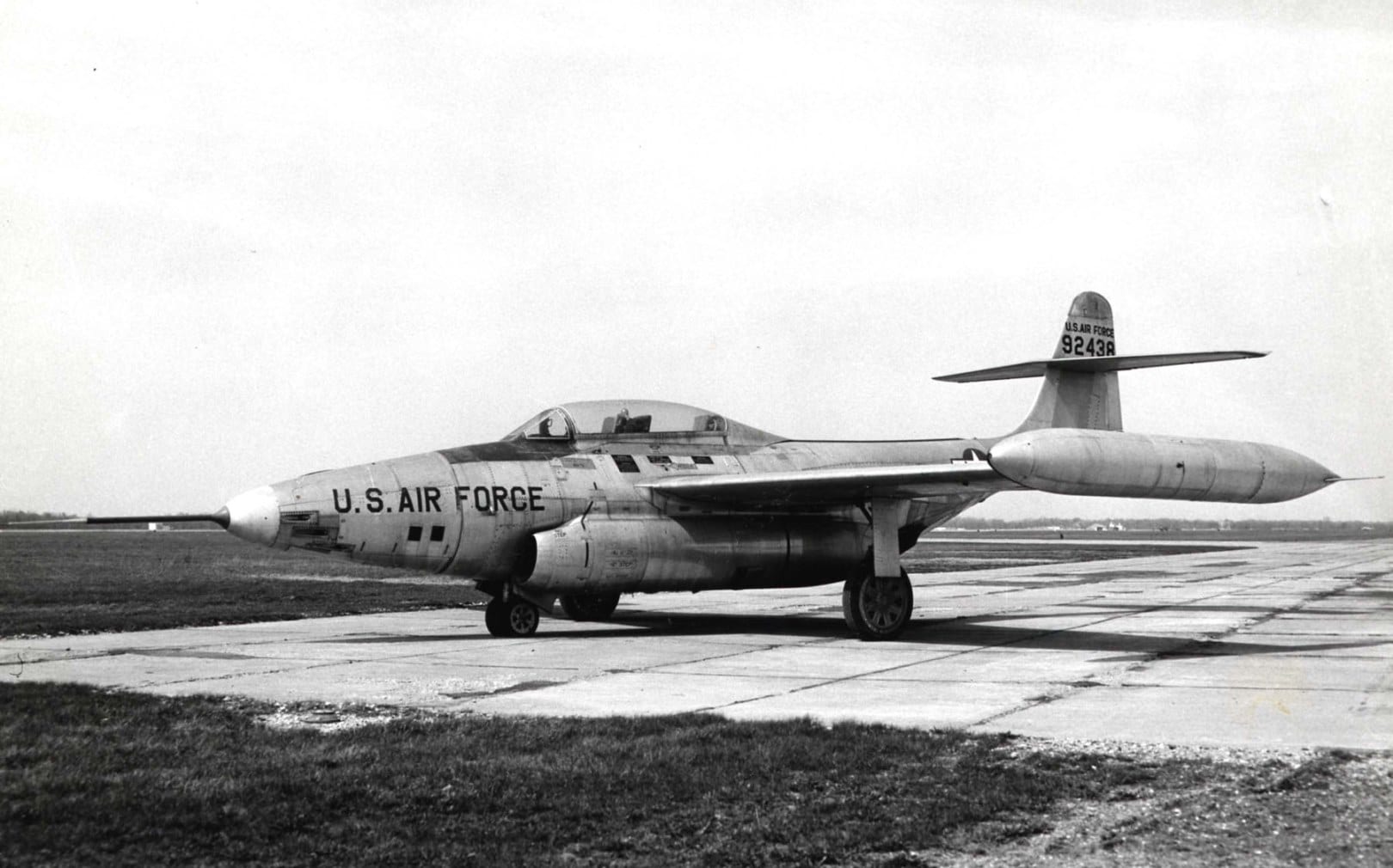
Early Jet Engines Stall Another Design
First flown on 16 August 1948, at Edwards Air Force Base (AFB), the prototype designation changed to XF-89 soon thereafter. Painted black with that high-mounted tail, the nickname Scorpion for the jet was probably inevitable. But to the surprise of very few, the J35 engines were found to be inadequate as power plants for the jet.
In fact, after talking it over with the pilots who had flown the three designs in development at the time (including the Douglas XF3D Skyknight), the decision to build the Lockheed F-94 Starfire as an interim measure was made. Eventually, the Scorpion won out thanks to its higher speed and development potential.
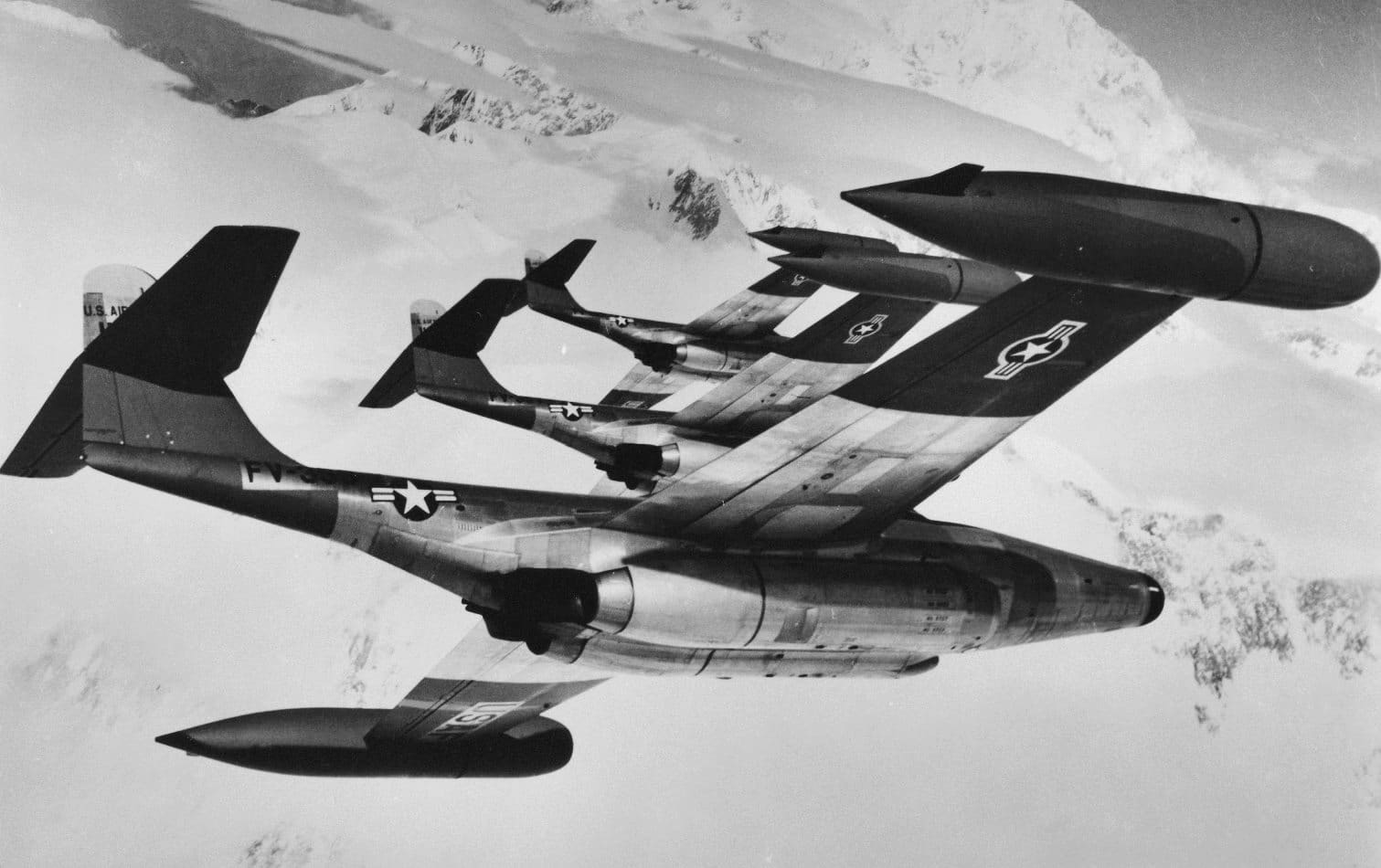
Building a Better Scorpion
Continued development of the F-89 resulted in the engines being upgraded to the more powerful J35-A-33 turbojet engine with afterburner. Excess weight was removed from the aircraft, and the forward gun turret was replaced by a Hughes Aircraft-designed six-gun nose housing the AN/ARG-33 radar with an E-1 fire-control system.
The Scorpion also picked up permanent wingtip fuel tanks and ease of maintenance improvements. The crash of the prototype following an appearance in the John Wayne movie Jet Pilot resulted in a revised lower aft fuselage fairing and engine exhausts, along with a revised empennage with elevator balancing weights.
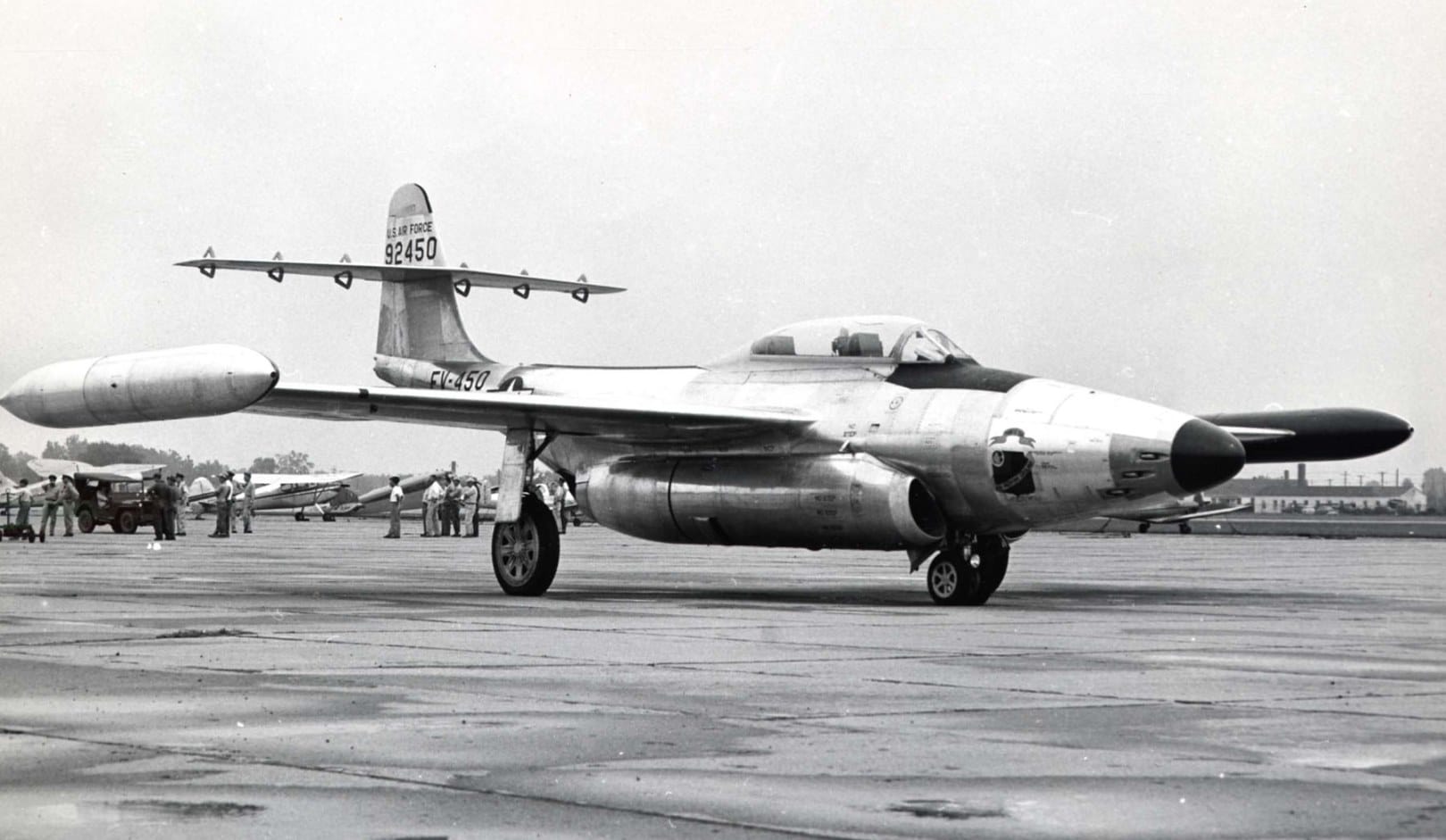
Still With the Engines!
Once production of the F-89B began in 1950, the jets entered service with the 84th Fighter Interceptor Squadron (FIS) Black Panthers in June of 1951. The Bravos had a revised nose with the AN/APG-33 radar and six 20 millimeter T-31 cannons with 200 rounds each. Underwing pylons could carry up to 16 5-inch rockets or 3,200 pounds of ordnance. The problem with the Bravo was, inevitably, those J35 engines. The F-89C was an incremental improvement of the breed with internal elevator balancing weights, but structural issues with the wings grounded all Scorpions until 194 of the F-89A, Bs, and Cs were refit. It wasn’t until the F-89D variant that Northrop got the Scorpion moving. Sort of.

Mighty Mouse
The Scorpion Delta saw a major change up front. First flown on 23 October 1951, the F-89D lost the guns in its nose and picked up a new radar- the AN/APG-40 with the Hughes E-6 fire control system and an AN/APA-84 computer. The jets were armed with 52 2.75-inch Mighty Mouse Folding Fin Aerial Rockets (FFARs) mounted in the forward portion of each wingtip tank and could carry drop tanks on underwing pylons.
682 Deltas were built, achieving a kill ratio of 1-0 thanks to the successful engagement (but not destruction by arms) of a runaway Grumman F6F-5K Hellcat drone. Drone controller Scorpions were designated DF-89 and mainly came in DF-89A, DF-89B, and DF-89D flavors.

Still at the Drawing Board
As the F-89 continued to suffer from thrust deficiencies in service, proposed F-89E and F-89F variants were proposed and rejected. The F-89G would also have incorporated yet another improved radar and fire control system, but paired with the new Hughes radar-guided GAR-1 and infrared-guided GAR-2 (AIM-4) Falcon air-to-air missiles.
When the F-89H entered service in 1954, it was equipped with the Hughes E-9 fire control system (similar to that used in the Convair F-102 Delta Dagger) and sported even larger wingtip fairings housing three Falcons and 21 FFARs on each wing. However, the development of the fire control system lagged, and the Hotel was phased out of service quickly.
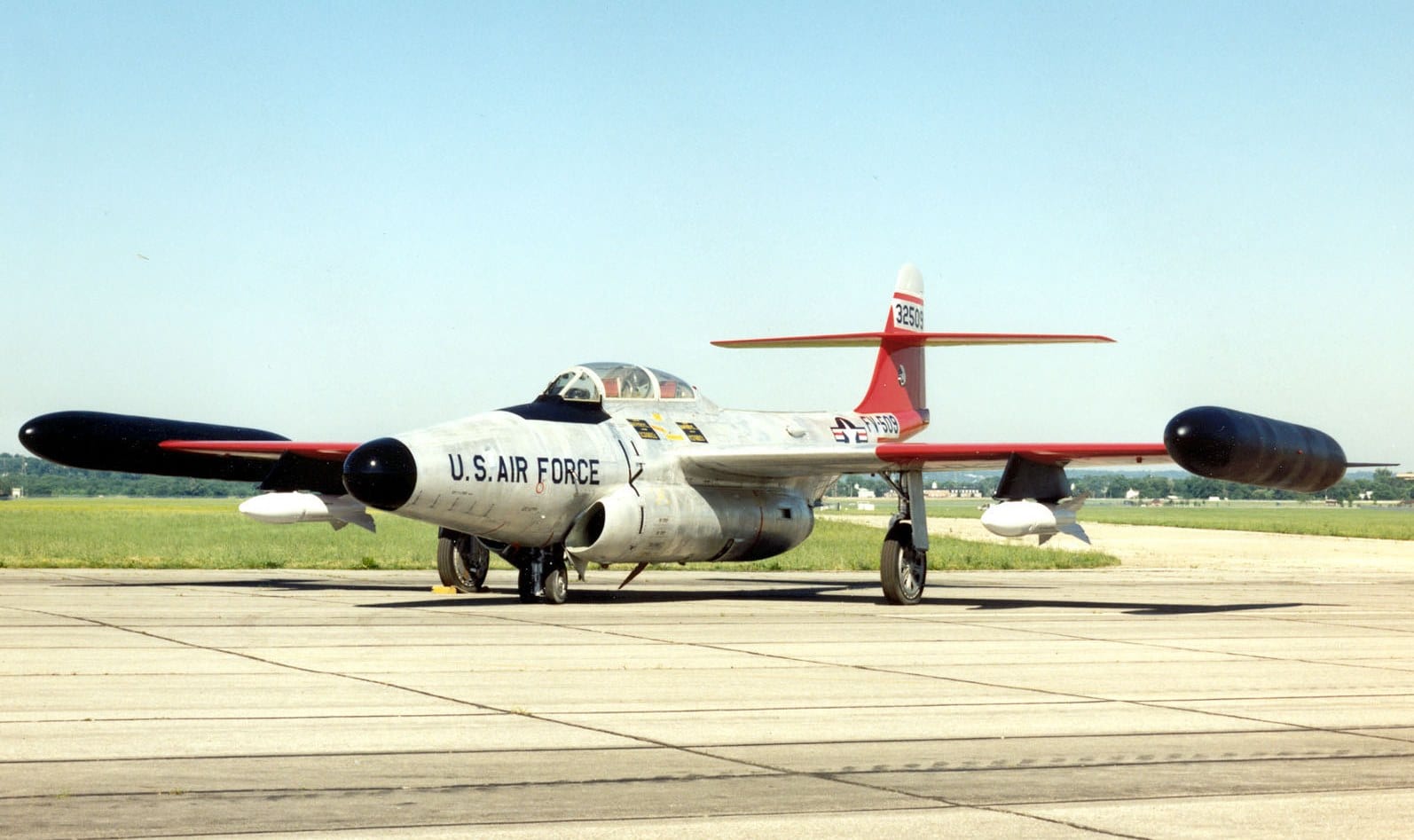
Rebuilding to Defend a Nation
The F-89J was the final Scorpion variant to enter service. It was not a new-build Scorpion. Rather, the F-89Js were rebuilt F-89Ds. The F-89J was equipped with 600-gallon wingtip fuel tanks and underwing pylons for carriage of one unguided Douglas MB-1 (AIR-2) Genie rocket. Up to four Falcon missiles could be carried in addition to the Genies.
The first Air National Guard (ANG) unit to fly F-89s was the 176th FIS of the 128th Fighter Interceptor Wing (FIW) Wisconsin ANG. F-89Js served with Air Defense Command (ADC) until 1960 and ANG squadrons until 1969. During Operation Plumbbob in 1957 at the Nevada Test Site, an F-89J fired the only live AIR-2A Genie rocket with a W-25 warhead for the John Shot.

Still the Best Option During a Turbulent Time
The F-89 Scorpion was this country’s air defense interceptor during a large part of the 1950s. Though no F-89 ever fired a shot in anger, Scorpions did a vitally important job that few ever even knew was being done. A total of 36 USAF and 17 ANG squadrons flew the Scorpion. Thanks to the pace of jet engine development at the time, the jets were always underpowered and slow to respond, resulting in accident rates entirely unacceptable today.
Those low-mounted engines picked up debris constantly, but retractable screens were added to reduce that issue. More reliable and powerful Allison J35-A-47 engines eventually powered the Scorpions that remained in service through the 1960s. Most Scorpions ended their service lives after being replaced by McDonnell F-101B Voodoos or Convair F-102s.
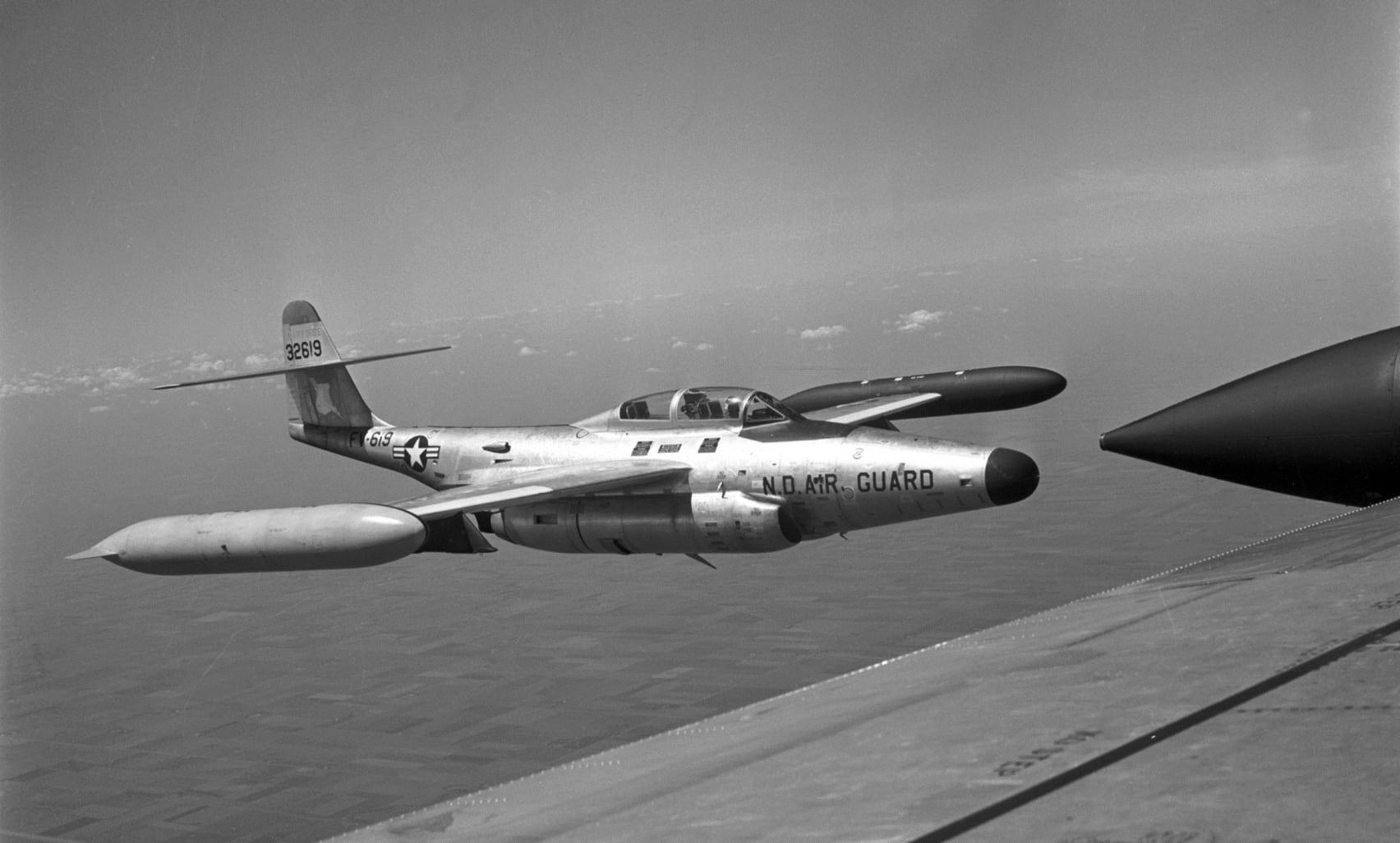
This video featuring the F-89 Scorpion was uploaded to YouTube by PeriscopeFilm
[youtube id=”Pjoi_u3E9DA” width=”800″ height=”454″ position=”left”]
